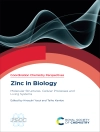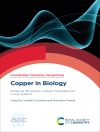New to coordination chemistry and looking for some straightforward resources?
In this long-established field of science, developments have continued between disciplines. Thus, modern coordination chemistry is recognized as an interdisciplinary molecular science that has developed at the intersection of inorganic and organic chemistry. Translated from the original Japanese, this accessible book is for undergraduate and graduate students and young researchers new to coordination...
قائمة المحتويات
- Introduction: What is a ‘Metal Complex’
- Structure of Metal Complexes
- Electronic Structure of Metal Complexes
- Optical Absorption and Emission of Met...
قم بشراء هذا الكتاب الإلكتروني واحصل على كتاب آخر مجانًا!
لغة الإنجليزية ● شكل EPUB ● صفحات 633 ● ISBN 9781837673261 ● حجم الملف 14.9 MB ● محرر Tomoaki Tanase & Yoichi Ishii ● الناشر RSC ● مدينة Cambridge ● بلد GB ● نشرت 2024 ● الإصدار 1 ● للتحميل 24 الشهور ● دقة EUR ● هوية شخصية 9520169 ● حماية النسخ Adobe DRM
يتطلب قارئ الكتاب الاليكتروني قادرة DRM












